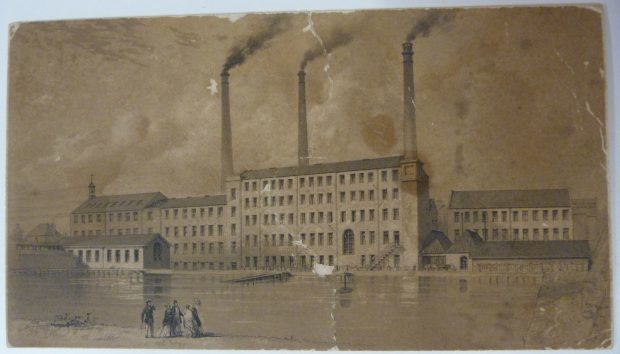The smoking chimney stacks of Aberdeen’s Broadford Works were a common sight for generations of Granite City residents.
And now, the city council is offering a fascinating glimpse into the lives of workers at the textile factory ahead of major redevelopment plans at the site.
The industrial premises contain the largest collection of at-risk listed buildings in Scotland with some dating back as far as 1808.
But, since closing its doors for the final time in 2004, the former Richards mill has been repeatedly targeted by fire-raisers, leading to an increase in safety measures this year.
Ambitious plans are on the table for an 890-home “urban village” on the derelict site, which will also include restaurant and bar facilities.
But the locale still has a rich history and heritage and the city’s Town and County Hall will host the special commemorative event on Saturday, September 17 at 11am.
The exhibition features items from the Aberdeen City and Aberdeenshire Archives and the city’s museum collection and it will also highlight a number of images loaned from the Aberdeen Journals Ltd photographic archive.
From 2-3pm, Mark Watson from Historic Environment Scotland will give a talk about the early 19th-century owners of the mill and there will be a range of activities for children, including a chance to try their hand at weaving.
Council deputy leader Marie Boulton said the authority was keen to speak to former Richards workers on the day,
She added: “This event promises to provide a fascinating look back at one of Aberdeen’s most iconic buildings and at an industry which was a key influence on how Aberdeen developed during the industrial revolution.
“I am especially interested in the old staff records – at one time, Richards was the biggest manufacturing employer in Aberdeen and, in its heyday, employed up to 3,000 staff.
“We would love former staff to come along on the day and share their memories. We’ve already had some photographs of staff social events donated by a former worker and will have a large site plan for people to annotate on the day with their stories.”
